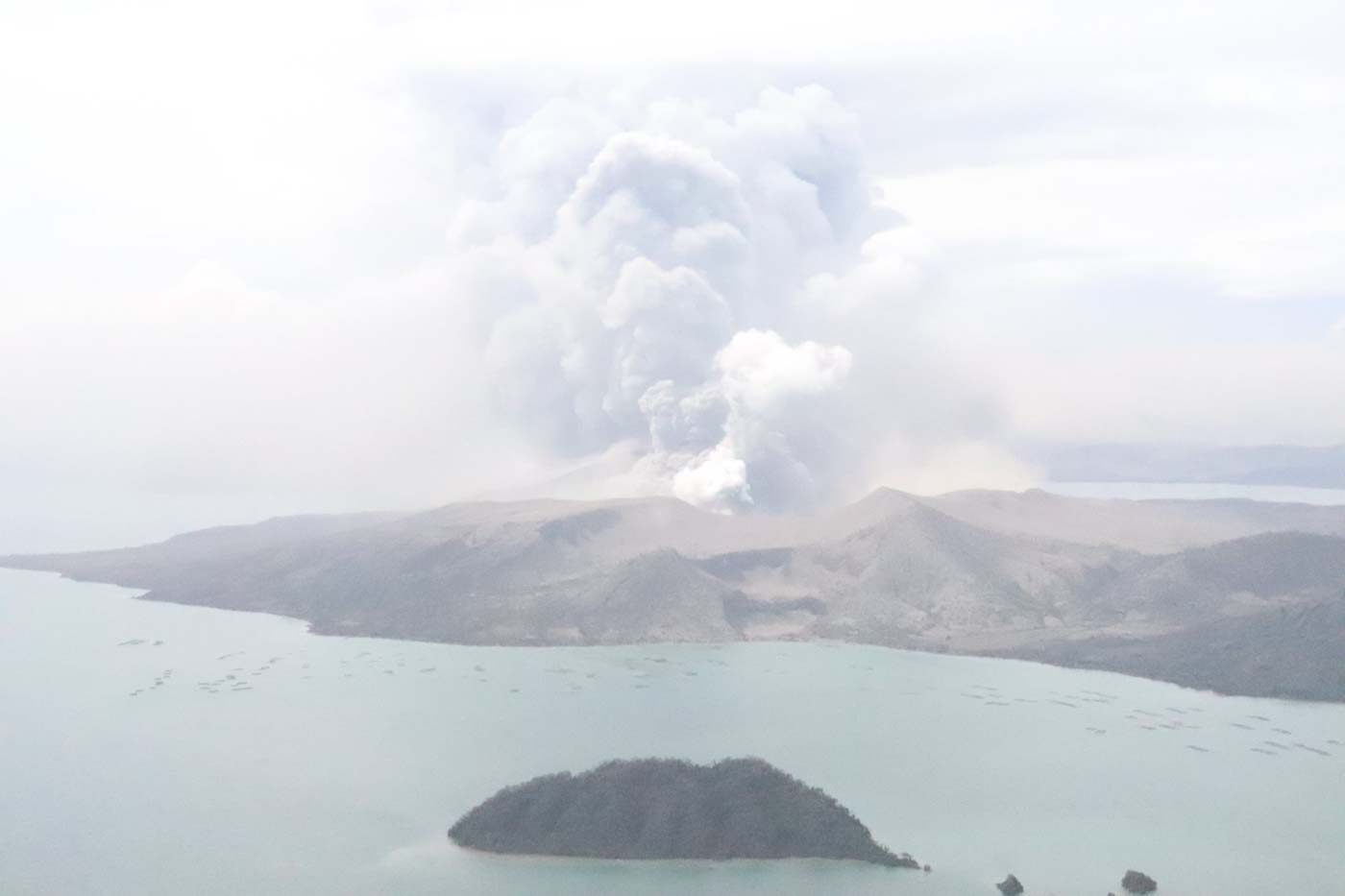SUMMARY
This is AI generated summarization, which may have errors. For context, always refer to the full article.

MANILA, Philippines – Residents living in areas surrounding Taal Volcano have reported feeling earthquakes since Sunday, January 12.
Taal Volcano, one of the country’s 24 active volcanoes, has been placed under Alert Level 4, which warns of a “hazardous” eruption that could happen “within hours to days.” (FAST FACTS: What you should know about Taal Volcano)
Volcanic earthquakes are indicative of a restless volcano. According to the Philippine Institute of Volcanology and Seismology (Phivolcs), these earthquakes are induced by “rising lava or magma beneath active volcanoes.” (READ: Dazzling and deadly: 5 facts about volcanoes)
Magma is made of crystals, volcanic glass, and bubbles stored within the Earth’s crust. It turns into lava once it reaches the earth’s surface through volcanic vents.
These volcanic earthquakes are different from tectonic earthquakes. The tectonic earthquakes are usually larger and caused by “movement of plates when energy accumulated within plate boundary zones is released,” according to the University of the West Indies’ Seismic Research Center.
Volcanic earthquakes, meanwhile, are usually small but become more frequent as unrest intensifies.
Earthquakes and eruptive activities
The frequency of earthquakes is one of the “precursors to eruptions” being monitored by Phivolcs.
The other indications that further indicate Taal Volcano eruptions could happen, according to Phivolcs, include:
- Increase in temperature and level of Main Crater Lake
- Development of new thermal areas and/or reactivation of old ones
- Ground swells or inflation and ground fissuring
- Increase in temperature of ground probe holes at Mt Tabaro
- Sulfuric odor and acrid fumes
- Fish kills and drying up of vegetation
In an interview with CNN Philippines, Phivolcs chief Renato Solidum said that the public may expect more activities from Taal Volcano due to the increasing number of earthquake events.
At least 49 volcanic earthquakes were recorded in the area of Taal from 2-10 am on Tuesday, January 14 alone.
From 1 pm Sunday, January 12, to 2 am of January 14, the Philippine Seismic Network recorded 212 volcanic earthquakes. At least 81 quakes were “felt with intensities ranging from Intensity I to V.”
“Such intense seismic activity probably signifies continuous magmatic intrusion beneath the Taal edifice, which may lead to further eruptive activity,” Phivolcs said in a bulletin.
The number of evacuees has reached more than 24,000, with many still living in fear over their livelihoods and homes, among others. (READ: ‘Lubog na lahat’: Calawit residents return to crushed homes) – Rappler.com
Read Rappler explainers on Taal Volcano:
Add a comment
How does this make you feel?
There are no comments yet. Add your comment to start the conversation.